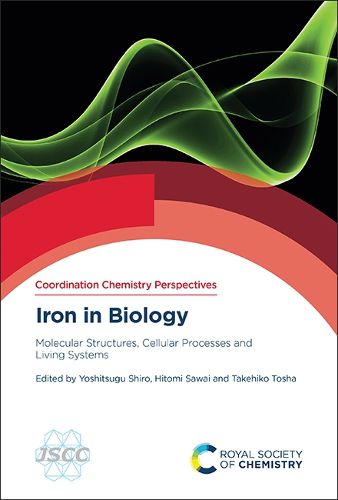Readings Newsletter
Become a Readings Member to make your shopping experience even easier.
Sign in or sign up for free!
You’re not far away from qualifying for FREE standard shipping within Australia
You’ve qualified for FREE standard shipping within Australia
The cart is loading…






Heavy metals essential to organisms are termed "biometals". Bio-inorganic chemistry deals with the functions of biometals in vivo at an atomic to molecular level, while cellular regulation of biometals such as absorption and transport has been investigated in cell biology. Although these research fields are independently developed and matured, interdisciplinary information across these fields is required for a comprehensive understanding of the roles of biometals at atomic to molecular, cellular and organism levels.
This book focuses on iron (Fe) in cells, since it is the most abundant metal in living system and is involved in a variety of physiological events such as enzymatic reactions as catalysts and signal transduction. Both excess and shortage of iron cause serious diseases such as anaemia, cancer and neuronal degeneration. The cellular systems consisting of many specific proteins strictly control the iron contents through the iron dynamics in cells including absorption, sensing, storage, transport and usage.
Resulting from a 5-year project on Integrated Biometal Science in Japan, this book not only documents the latest research but also fills a gap between chemical understanding and our real life, by providing fundamental ideas on genetics, drugs and environmental health.
$9.00 standard shipping within Australia
FREE standard shipping within Australia for orders over $100.00
Express & International shipping calculated at checkout
Heavy metals essential to organisms are termed "biometals". Bio-inorganic chemistry deals with the functions of biometals in vivo at an atomic to molecular level, while cellular regulation of biometals such as absorption and transport has been investigated in cell biology. Although these research fields are independently developed and matured, interdisciplinary information across these fields is required for a comprehensive understanding of the roles of biometals at atomic to molecular, cellular and organism levels.
This book focuses on iron (Fe) in cells, since it is the most abundant metal in living system and is involved in a variety of physiological events such as enzymatic reactions as catalysts and signal transduction. Both excess and shortage of iron cause serious diseases such as anaemia, cancer and neuronal degeneration. The cellular systems consisting of many specific proteins strictly control the iron contents through the iron dynamics in cells including absorption, sensing, storage, transport and usage.
Resulting from a 5-year project on Integrated Biometal Science in Japan, this book not only documents the latest research but also fills a gap between chemical understanding and our real life, by providing fundamental ideas on genetics, drugs and environmental health.